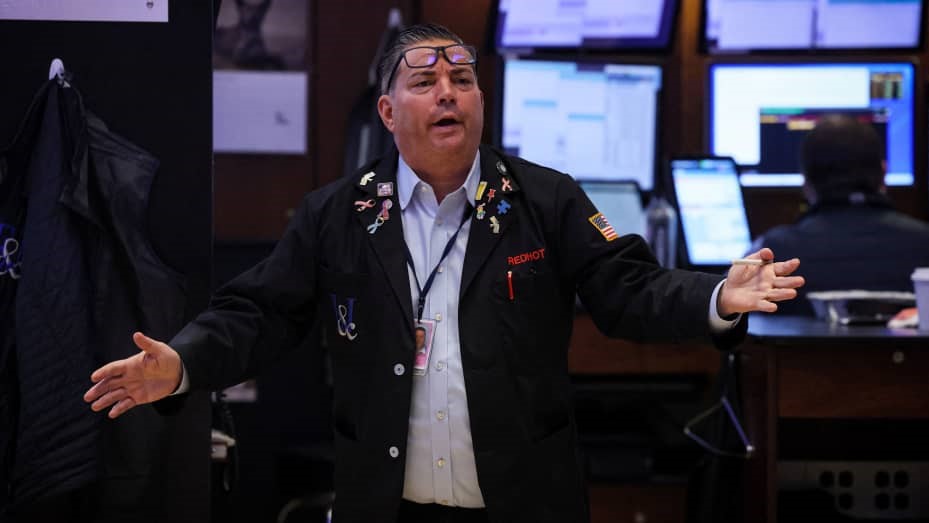A trader works on the floor at the New York Stock Exchange (NYSE) in New York City, U.S., March 5, 2024.
Brendan Mcdermid | Reuters
Risk appetite among professional investors in March has hit its highest level in more than two years, according to Bank of America’s closely watched fund manager survey.
Sentiment among the 226 market pros who responded to the monthly gauge of finance’s top investors showed optimism at its highest level since January 2022.
The bank’s measure of bullishness takes into account cash levels, allocations to stocks and the outlook on the economy. It showed a reading of 4.6 on the month, up 0.3 point from February and well off its nadir hit a year ago when the implosion of several regional banks rocked Wall Street.
Such surges in optimism can be contrarian indicators, meaning they often are good times to sell. However, BofA said average cash balances remain at 4.2%, above the 4% threshold that would trigger a sell signal. The bank’s “Bull & Bear Indicator” is at 6.5, which is “bullish but not yet extreme bullish,” said Michael Hartnett, Bank of America’s chief investment strategist.
Several other measures also registered their highest levels since early 2022.
BofA’s general “risk appetite” measure is at its peak since November 2021. As part of that, the preference for low-dividend stocks is at its highest since December 2021. Respondents also see small-caps topping large-cap stocks, value to outperform growth though the preference is still for high quality over low quality.
Global growth expectations also are at their highest since January 2022 and “have been been front-run by higher stock prices,” Hartnett said.
The level of respondents expecting a global recession in the next year hit its lowest level since February 2022. A total of 85% expect either a soft landing or no landing for the economy, while just 11% see a hard landing, down from 30% as recently as October 2023.
Indeed, the S&P 500 is up about 8% year to date, pushed higher by surges in tech, communication and energy stocks. In general, cyclical stocks have led the rally while defensives such as utilities have lagged.
As risk appetite has swung higher, it has brought a change in what survey respondents want companies to do with cash on their balance sheets.
After a lengthy period of pushing corporate America to pay down debt rather than return cash to shareholders, that has changed. Now, the level of investors wanting chief financial officers to prioritize dividends and share buybacks is at its highest level since July 2015.
That trend has coincided with a sharp slowing in the pace of the $27.3 trillion corporate debt load. Nonfinancial business debt grew at just a 2.2% pace in 2023, by far its slowest since at least 2014 and well below the peak of 9.3% in 2020.

